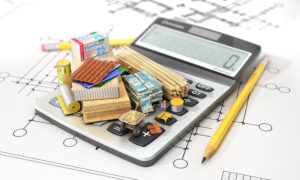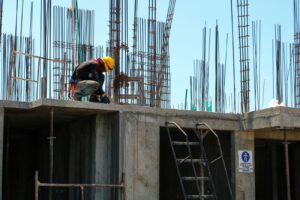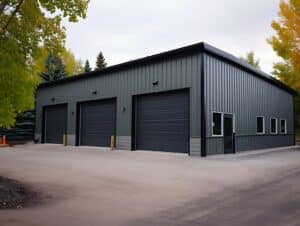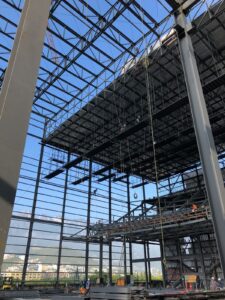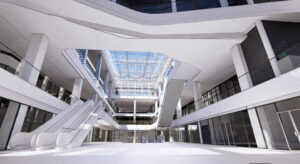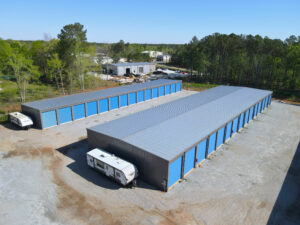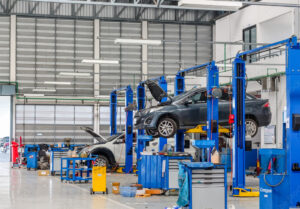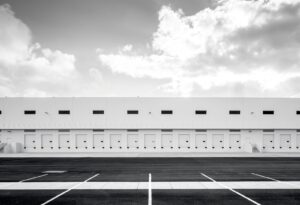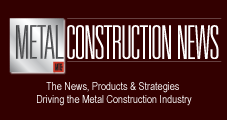Medical building construction requires careful planning and attention to detail to meet the unique needs of healthcare facilities. From the initial design phase to the postconstruction considerations, there are several key factors to consider for a successful project. This article will provide tips and best practices to guide you through the process.
Understanding the Unique Needs of Medical Facilities
Medical facilities have specific requirements that differentiate them from other types of buildings. These include the need for specialized spaces such as operating rooms, laboratories, patient rooms, and administrative areas. The design and construction of medical buildings must take into account factors such as infection control, patient privacy, and efficient workflow.
Furthermore, medical facilities must adhere to strict regulations and guidelines set forth by governing bodies such as the Centers for Medicare and Medicaid Services (CMS) and the Occupational Safety and Health Administration (OSHA). Compliance with these standards is crucial to ensure the safety of patients, staff, and visitors within the facility. This often involves incorporating features such as hand hygiene stations, proper waste disposal systems, and designated isolation areas for contagious patients.
Importance of Design in Medical Building Construction
The design of a medical building plays a crucial role in its functionality and efficiency. It is essential to work with experienced architects and designers who understand the specific needs of healthcare facilities. They can develop a layout that optimizes patient flow, minimizes the risk of infections, and promotes a healing environment. Incorporating natural light, adequate ventilation, and patient-friendly amenities can contribute to the overall wellness of the patients.
Moreover, the design of medical facilities often involves considerations for future expansion and technological advancements. Flexible layouts and infrastructure that can accommodate new medical technologies and equipment are essential for ensuring the longevity and adaptability of the building. Collaboration with healthcare providers and facility managers is key to understanding their evolving needs and integrating them into the design.
Key Features of Medical Buildings
Medical buildings often include specialized features to meet the unique requirements of healthcare facilities. These may include state-of-the-art HVAC systems, advanced medical equipment connectivity, and durable, easy-to-clean surfaces. Additionally, medical buildings should prioritize accessibility, with wheelchair ramps, elevators, and well-marked navigation throughout the facility.
Another important aspect of medical building design is the incorporation of technology to enhance patient care and operational efficiency. This can include electronic medical record systems, telemedicine capabilities, and automated medication dispensing systems. Integrating these technologies seamlessly into the infrastructure of the building requires careful planning and coordination between architects, engineers, and IT specialists.
Planning and Preconstruction Phase
Before starting the construction process, thorough planning and preparation are essential. This phase includes crucial steps such as selecting an appropriate site and developing a comprehensive construction plan.
During the planning and preconstruction phase of a project, it is important to conduct thorough research and analysis to ensure that all aspects of the construction process are carefully considered. This involves evaluating the environmental impact of the project, conducting feasibility studies, and assessing potential risks and challenges that may arise during the construction process. By taking the time to thoroughly plan and prepare, project managers can mitigate potential issues and ensure a smoother construction process.
Site Selection for Medical Buildings
The site selection process is critical for the success of a medical building project. Factors to consider include proximity to the target patient population, accessibility to major transportation routes, and availability of utilities. It is also essential to assess the zoning requirements and ensure the site can support the necessary infrastructure for a medical facility.
Furthermore, when selecting a site for a medical building, it is important to consider future expansion possibilities and the overall long-term vision for the facility. By choosing a site that allows for potential growth and development, healthcare organizations can better adapt to changing needs and technology advancements in the future.
Preconstruction Planning Tips
Detailed preconstruction planning is vital to set the project up for success. This includes developing a realistic budget, securing necessary permits, and creating a project schedule. It is crucial to involve all stakeholders, including architects, engineers, contractors, and healthcare professionals, from the beginning stages to ensure everyone’s requirements are met.
In addition to the technical aspects of preconstruction planning, it is also important to consider the impact of the project on the surrounding community and environment. Engaging with local stakeholders, conducting community outreach programs, and implementing sustainable construction practices can help minimize the project’s footprint and ensure a positive relationship with the community.
Construction Phase Best Practices
During the construction phase, it is important to prioritize safety and quality control to ensure a successful outcome. Attention to detail and adherence to best practices can make a significant difference in the overall success of a construction project.
One key aspect of construction phase best practices is project planning. Thorough planning sets the foundation for a smooth construction process, helping to identify potential risks and challenges early on. This includes creating a detailed timeline, budget, and scope of work, as well as establishing clear communication channels among all project stakeholders.
Ensuring Safety During Construction
Safety should always be a top priority on a construction site, especially in medical building projects. Contractors should implement stringent safety protocols, including proper equipment use, regular site inspections, and comprehensive safety training for workers. It is also important to establish clear communication channels and protocols for reporting any potential safety hazards.
Another important aspect of ensuring safety during construction is the use of personal protective equipment (PPE). In medical building projects, where workers may be exposed to hazardous materials or biohazards, the proper use of PPE such as gloves, masks, and protective clothing is essential to prevent accidents and injuries.
Quality Control in Medical Building Construction
Maintaining high-quality standards throughout the construction process is crucial in medical building projects. Regular inspections and quality control checks should be implemented to verify that the work meets the required specifications and regulations. It is recommended to work with trusted contractors and suppliers who have experience in healthcare construction to ensure the highest level of quality.
In addition to quality control measures, incorporating sustainable construction practices can also enhance the overall quality of a medical building project. Utilizing energy-efficient materials, implementing waste reduction strategies, and designing for long-term durability can not only improve the environmental impact of the project but also contribute to the health and well-being of building occupants.
Postconstruction Considerations
Once the construction is complete, there are important considerations to ensure the long-term success and functionality of the medical building. Planning for the future is crucial in maintaining a modern and efficient healthcare facility that can meet the needs of patients and staff alike.
One key aspect to consider postconstruction is sustainability. Implementing eco-friendly practices and technologies can not only reduce the building’s environmental impact but also lead to cost savings in the long run. Strategies such as energy-efficient lighting, water-saving fixtures, and renewable energy sources can help the medical building operate more efficiently and sustainably over time.
Facility Maintenance and Upkeep
Regular maintenance and upkeep of the medical facility are essential to preserve its integrity and functionality. This includes routine inspections, repairs, and upgrades to keep the building in compliance with healthcare regulations. It is also important to establish an ongoing maintenance plan and allocate resources for future facility improvements. By investing in proactive maintenance, potential issues can be identified and addressed early, preventing costly repairs and downtime.
Another critical consideration is security and safety. Implementing robust security measures, such as access control systems, surveillance cameras, and emergency response protocols, can help protect patients, staff, and sensitive medical information. Regular safety audits and training sessions can ensure that everyone in the facility is prepared to handle emergencies effectively.
Adapting to Technological Advancements
The healthcare industry is constantly evolving, and medical buildings need to adapt to technological advancements. This may involve incorporating the latest healthcare technology infrastructure, such as electronic health records systems, telemedicine capabilities, and advanced imaging equipment. Regularly assessing and updating the facility’s technological capabilities can enhance patient care and streamline operations. Embracing innovation and staying abreast of emerging technologies can position the medical building as a leader in providing cutting-edge healthcare services to the community.
Regulatory Compliance in Medical Building Construction
Compliance with healthcare construction regulations is crucial to ensure patient safety and protect against legal liabilities.
When embarking on a medical building construction project, it is imperative to delve deeper into the intricate web of regulatory requirements that govern the healthcare industry. These regulations not only safeguard the well-being of patients but also uphold the integrity and reputation of the healthcare facility. Adhering to these standards showcases a commitment to excellence and professionalism in providing quality care.
Understanding Healthcare Construction Regulations
Healthcare construction projects must comply with various regulations, including those set by government agencies and industry organizations. These regulations cover areas such as infection control, fire safety, accessibility, and medical equipment standards. It is essential to stay up-to-date on the latest regulations and involve experts who can guide the project to compliance.
Moreover, healthcare construction regulations are dynamic and subject to updates and revisions. Staying abreast of these changes requires constant vigilance and a proactive approach to ensure that construction practices align with the most current standards. Engaging with regulatory bodies and industry experts can provide valuable insights into evolving compliance requirements.
Ensuring Compliance Throughout the Construction Process
Compliance with regulations should be a top consideration throughout the entire construction process. This includes selecting materials and equipment that meet the required standards, implementing proper infection control measures, and ensuring construction techniques align with the regulations. Regular inspections and collaboration with healthcare professionals can help ensure ongoing compliance.
Furthermore, fostering a culture of compliance within the construction team is essential to maintain a high standard of regulatory adherence. Training sessions, workshops, and clear communication channels can empower all stakeholders to understand their roles in upholding compliance standards. By fostering a collaborative environment that prioritizes regulatory compliance, medical building construction projects can achieve excellence in both safety and quality of care.

Conclusion
In conclusion, medical building construction requires thorough planning, attention to detail, and compliance with healthcare regulations. Understanding the unique needs of medical facilities, prioritizing safety and quality during construction, and considering postconstruction maintenance and technological advancements are all essential for a successful project. By following these tips and best practices, healthcare professionals can create functional, efficient, and safe medical buildings that meet the needs of their patients and staff.At SteelCo Buildings, we offer everything needed from project concept to completion. Learn more about our experience in steel building design and design-build services. Call today to speak to one of our experienced team members!


